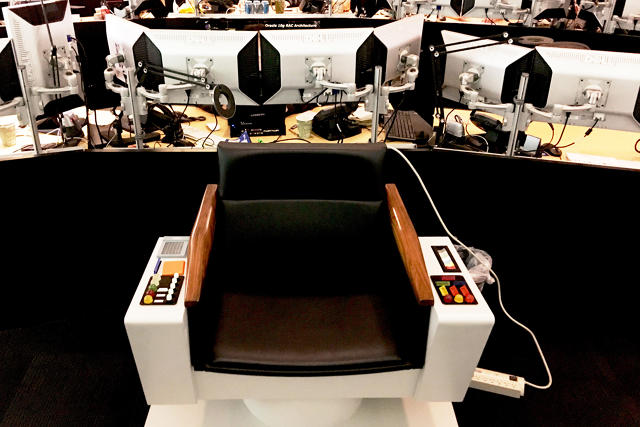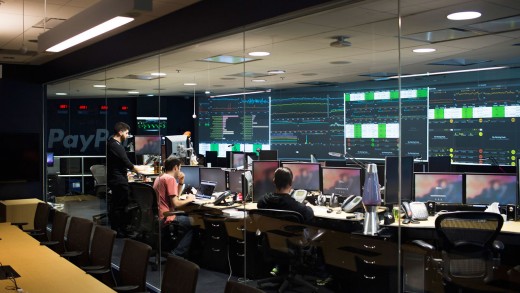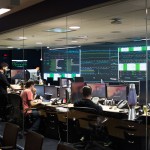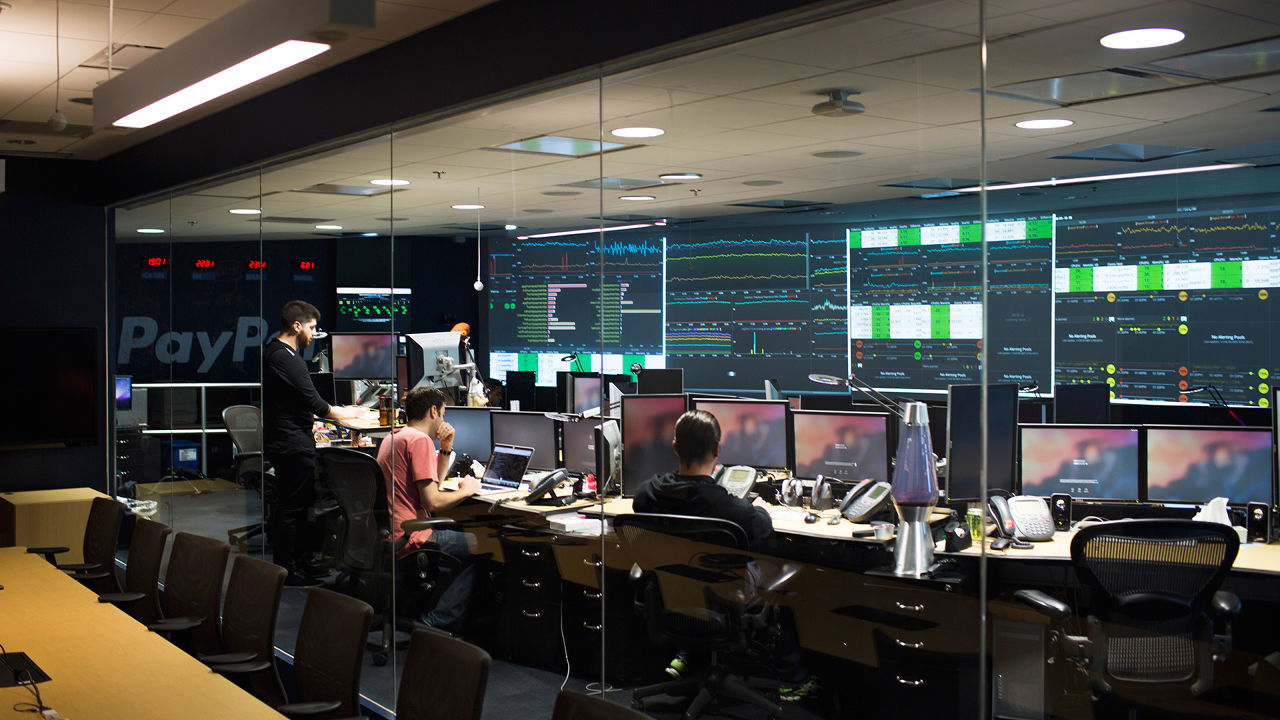inside of PayPal’s Command middle
What does it take to maintain PayPal working smoothly? a whole lot of data, techies able to spring into motion, and instrument that can fix itself.
December 21, 2015
I’m sitting in the “warfare Room” at PayPal’s headquarters in San Jose, California, speaking to Sri Shivananda, the corporate’s VP of world platform and infrastructure. despite the evocative identify, it is just a convention room. however certainly one of its partitions is in truth an enormous window—and what it unearths on the opposite aspect of the glass is anything but strange.
at the back of the glass is a room whose other partitions are plastered with enormous displays, dense with numbers and graphs. PayPal workers take a seat at rows of desks, observing additional info on laptop screens. there may be knowledge all over the place, being up to date in actual time. Even observing it from a distance—and no longer having a clue what most of it method—is an excessive expertise.
“This,” Shivananda says as he gestures at the window, “is mainly the heart beat of PayPal.”
extra namely, it’s the company’s command heart—the ability the place it displays whether the PayPal provider is functioning properly on a millisecond-by-millisecond basis. just to state the utterly obtrusive, there may be actual money at stake: With 173 million active customers, PayPal tactics a standard of $8,773 in funds every second.

Shivananda, whose duties embody managing the San Jose command middle in addition to equivalent outposts in Scottsdale, Arizona, and Chennai, India, assumed his present position most effective last July. but he labored at eBay for 15 years, where he helped merge the eBay and PayPal platforms after the e-commerce website sold the payment provider in 2002. far more recently, he spent 9 months breaking them up once more within the wake of eBay’s 2014 announcement that it could spin PayPal out into an independent public company. “It was once a triple-MBA in exchange management, and a double-MBA in quandary administration,” Shivananda says.
The break up supplied PayPal with an opportunity to reassess how it monitored its carrier’s status. on the time, the command middle kept tabs on about 150 completely different data signals. That would possibly sound like quite a bit, but in a company with tens of heaps of servers and 1,500 discrete software applications, it captured most effective a shallow portrait of how PayPal was faring at any given second.
“A server has a voice,” Shivananda explains. “An application has a voice. An working device has a voice. And they’re telling you things. they’re telling you their very own well being, and that translates into about 350,000 indicators. Per 2nd.”
the normal, people-intensive command-heart edition may never scale as much as deal with hundreds of heaps of information factors. Being smarter about which signals to look at in the command heart is a part of the solution. So is educating tool bots to determine and clear up problems on their own.
San Jose, we’ve an issue
For all of the methods by which PayPal is rethinking its response to technical snafus which will affect the provider, the job still entails human beings making collaborative decisions on the fly. As problems are recognized, the corporate’s response is managed by a crew of technical duty officers, who occupy the back row of desks inside the command heart. Shivananda likens these TDOs to Gene Kranz, the legendary NASA flight director whose achievements incorporated guiding the Apollo thirteen astronauts to security.
also on the premises: consultants similar to techniques directors, database engineers, and security specialists. On a standard day, these staffers may be tending to other tasks as they sit down in the room. but if an issue arises, they’re there to spring into action. “when you go to Mission control at NASA, you’ve gotten jet propulsion and telemetry and you’ll in fact have a physician sitting there within the back row,” Shivananda says. “it is very similar to that.”
another frame of reference that can spring to mind—especially if you’re a star Trek aficionado—is the bridge of the U.S.Enterprise. It undoubtedly passed off to PayPal: the corporate commissioned a custom-built reproduction of Captain Kirk’s chair and put it right up entrance.
What’s on the command center’s seven giant displays is based totally from enter from the staffers themselves. It comprises everything from a snapshot of the fee processing which is going on at eBay—nonetheless a key PayPal accomplice despite the fact that the 2 companies are no longer a single entity—to breakouts of how the service is interacting with all the credit score-card processors it helps.
the whole thing is equipped with good judgment and legibility in thoughts. “The cognitive load on an engineer is minimal,” Shivananda says. “They don’t have to assume where to seem. They know that just like English goes from left to right, these alerts go from left to proper.” within the case of in point of fact severe malfunctions, the gadget will even pipe a verbal alert into the room by the use of loudspeakers.

staring at the alerts
PayPal’s more than one command facilities present the company with industry continuity within the case of worst-case scenarios—a virtue which is not just theoretical on condition that Chennai has lately been hit by using devastating floods, which shut down its command center for a time. additionally they allow for protection that’s both 24/7 and world. The carrier has a height hour of activity—Shivananda does not wish to expose what it’s, for aggressive causes—and it kicks in more than one instances a day as areas around the globe wake up. “while you take a look at the chart, you’ll see a spike for Europe, then a spike for the U.S,” he says. “And Asia roughly blends in.”
Shivananda begins to enumerate the issues that may go fallacious all through any given day: “There are bugs in a software replace that lead to error. A workforce is doing maintenance on a load balancer. A database crashes. An ISP can’t take site visitors. Any a kind of is a chance for an error to occur.”
As PayPal rebuilt itself for a post-eBay future, it took a recent have a look at the essential records it was once monitoring for signs of hassle. “Over 4 months, we did various analysis to figure out that are essentially the most high-worth indicators,” Shivananda says. “despite the fact that we run the science throughout all 350,000 alerts a second, the high-worth signals, we put up on the partitions. everything else goes on an alert mechanism.”
the corporate is also beginning to automate some elements of addressing in style problems, in circumstances where it was once assured that making use of the identical repair in the same solution to the identical kind of flaw will work each time. “If i can repeat it consistently and reach the same end result, i’ll put it in a bot,” Shivananda says.
Already, PayPal has created bots which can be in a position to patching servers on the network which have out-of-date tool. “the future of the ecosystem will not be visible signs,” says Shivananda. “it can be basically the science that runs says ‘This software is throwing more blunders, please roll back.’ And after that, it’ll go ‘i know the sign. i know what to do. i’ll simply do it.”
there may be loads more to return. “think about a military of software bots as a way to use these indicators, keep in mind the placement, know what motion to take, and just take the motion,” he says. “Even sooner than a human realized that there was once a topic.”
the subsequent technology
even though bots end up doing a lot of the heavy lifting of protecting PayPal up and operating, there is still room to strengthen the human element of the method. For one thing, the San Jose command center I visited will quickly be moving to a brand new room local, with better-resolution displays in a position to crisply displaying much more information, plus other technical enhancements.
beyond that, Shivananda sees a day when the command middle might go digital, with staffers the usage of a VR headset corresponding to Oculus Rift to investigate PayPal’s crucial signs. “The Oculus could be a digital interface to much more data than what that you can put on seven shows, including possibly head nods with the intention to take you to a certain stage of element,” he muses.
no matter what type of know-how PayPal comes up with, the fact that it has 350,000 information points a second to consider implies that it can be now not going to expire of opportunities to make the provider extra tough any time soon. “That knowledge has the entire indicators,” Shivananda says. “The question is, are we being attentive to it?”
(368)








